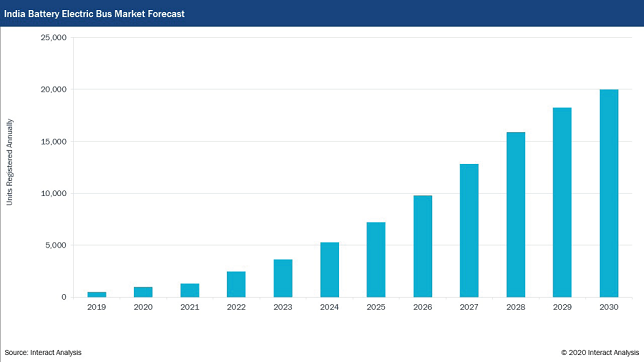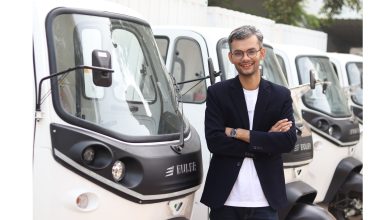Global battery electric commercial vehicle market to grow 47% in 2021

Interact Analysis is a UK-based market research company that produces in-depth reports into trail-blazing technologies such as robotics, industrial automation, and vehicle electrification. Our analysts study all major manufacturing countries and regions, including India.
Our recent research has included an in-depth assessment of the global commercial vehicles market. We look at the market from the powertrain angle – battery electric, fuel cell electric, hybrid and non-electric, but with a specific focus on electric and hybrid vehicles, as these two new energy solutions are gaining a strong foothold.
Global sales of battery electric trucks and buses have seen a further contraction in 2020 following China’s cutbacks in EV purchasing subsidies. We predict that by the end of the year, new registrations will stand at 155,890, which is a 7% drop on the 2019 figure (167,811). However, the sector will bounce back as early as 2021, when we expect to see a 47% leap in the market, taking the global figure up to 229,900 new battery electric vehicle registrations for that year. This is driven by growth in Europe and North America, along with the extension of China’s EV subsidy program which was meant to come to an end in 2020.
By 2030, India will become one of the world’s most important markets for battery electric commercial vehicles
Where does India stand in all this? The country is starting from a low base. The market for new registrations of battery electric trucks in any category was negligible in 2019, but our research detects green shoots of growth as the Indian economy expands. 2022 will see the country move into the 100s for the first time, with 400+ new registrations forecast. This figure will almost double in 2023. We are still talking small numbers compared with countries like the UK, Germany, and France, but in terms of growth rate, it could be described as exponential. Year on year increases are predicted to be of the order of 60-90% all the way up to 2030, when we anticipate India will register over 34,000 battery electric trucks, accounting for just over 3% of the total market. China’s battery electric commercial vehicle market is, of course, vast, however, if we take China out of the equation, India’s share of the rest of the APAC market for battery electric trucks will increase from 0.02% in 2022 to 19% in 2030.
Where battery electric buses (city and inter-city) are concerned, the story is very different. India is a vast and populous country. Its burgeoning economy is going to depend on an effective public transport system. Our analysts have emerged with some headline figures, placing India at second only to China in the global league-table by 2030, with new registrations in that year standing at nearly 20,000, way ahead of big economies such as Germany (predicted at 2,000 battery electric buses in 2030), and the US (at 7,000 – although this US figure includes school buses, which are not included in our figures for non-North American markets).
Interact Analysis forecasts that electrified powertrains – hybrid, fuel cell and battery electric – will account for over 2.5 million global annual registrations in 2030. Battery electric powertrains are expected to be the predominant drive technology in utility and light duty vehicles and city buses. Inter-city bus fleets and long-haul trucks are expected to see an increasing use of hybrid technology, primarily because of the long range of these vehicles, where pure battery electric is simply not a viable option.
For the purposes of our research, we subdivided commercial vehicles into the following categories: Utility trucks (0tn-2.8tn); light-duty trucks (2.8tn-6.35tn); medium-duty trucks (6.35tn-14.97tn); heavy-duty distribution trucks (above 14.97tn and above, e.g. refuse trucks); long-haul trucks (duty cycle approx. 400 miles per day); city buses and inter-city buses.
To continue the conversation about the global or Indian commercial vehicle market, get in touch with Alastair Hayfield today: alastair.hayfield@interactanalysis.com
Published in Telematics Wire





